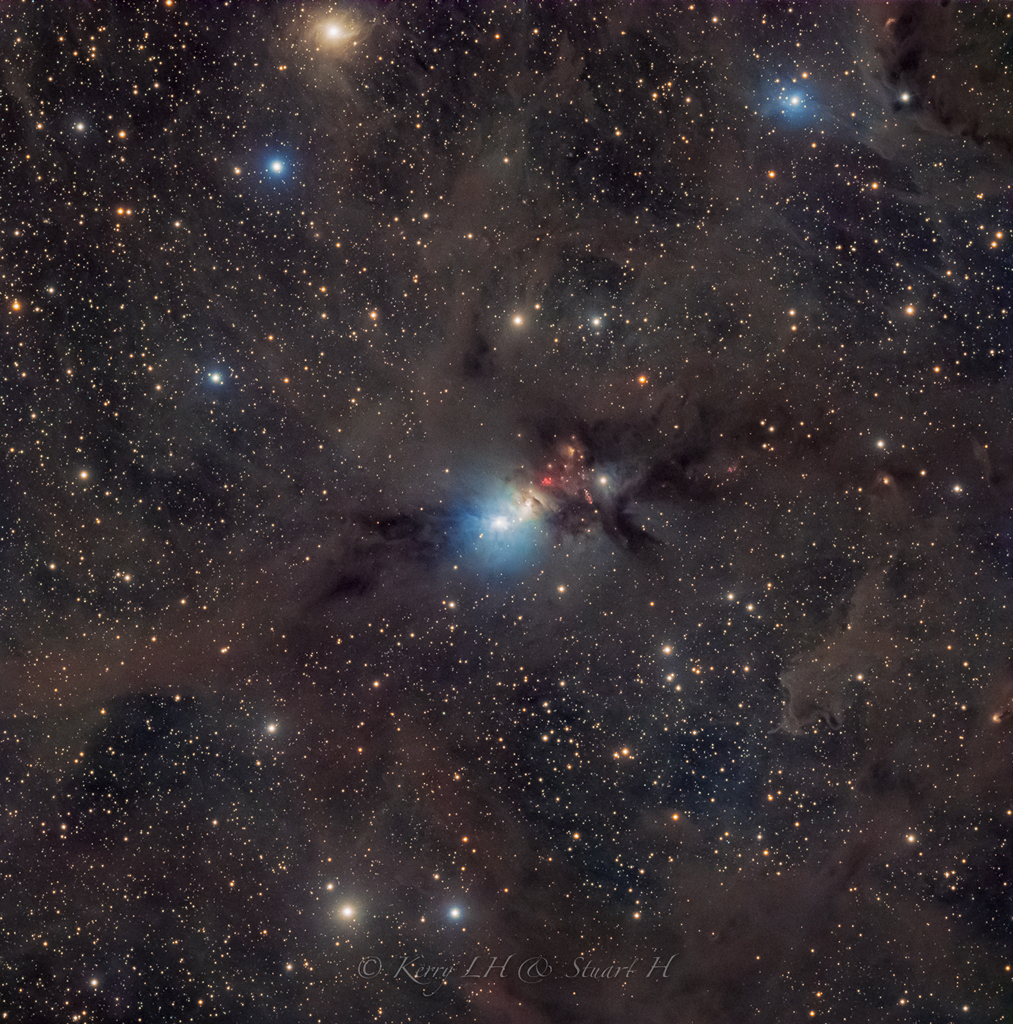2021年03月18日
Stardust in the Perseus Molecular Cloud
Image Credit & Copyright: Kerry-Ann Lecky Hepburn, Stuart Heggie
Explanation: Clouds of stardust drift through this deep skyscape, across the Perseus molecular cloud some 850 light-years away. Dusty nebulae reflecting light from embedded young stars stand out in the nearly 2 degree wide telescopic field of view. With a characteristic bluish color reflection nebula NGC 1333 is at center, vdB 13 at top right, with rare yellowish reflection nebula vdB 12 near the top of the frame. Stars are forming in the molecular cloud, though most are obscured at visible wavelengths by the pervasive dust. Still, hints of contrasting red emission from Herbig-Haro objects, the jets and shocked glowing gas emanating from recently formed stars, are evident in NGC 1333. The chaotic environment may be similar to one in which our own Sun formed over 4.5 billion years ago. At the estimated distance of the Perseus molecular cloud, this cosmic scene would span about 40 light-years.
Tomorrow’s picture: pixels in space
英仙分子云的星尘
影像提供与版权: Kerry-Ann Lecky Hepburn, Stuart Heggie
说明: 尘埃星云正飘过这片深空星野,穿过远在850光年外的英仙分子云。上面这幅宽约2度的望远镜视野,记录了尘埃云因反射内部恒星的星光,而现身的尘埃云。其中,带着特征泛蓝色泽的反射星云NGC 1333位在中心,vdB 13在右上角,而罕见的泛黄反射星云vdB 12则在影像顶缘附近。恒星正形成于英仙分子云之内,不过在可见光波段,它们受到无所不在的尘埃之遮挡,大多隐不可见。不过在NGC 1333之内,因有被喷流激发而发出泛红辉光的赫比格─哈罗天体之存在,暗示其内藏有刚诞生的恒星。我们太阳在45亿年前诞生时,当时的环境或许也是混乱如斯。以英仙分子云的估计距离来换算,这片宇宙景野宽约40光年。
明日的图片: pixels in space



